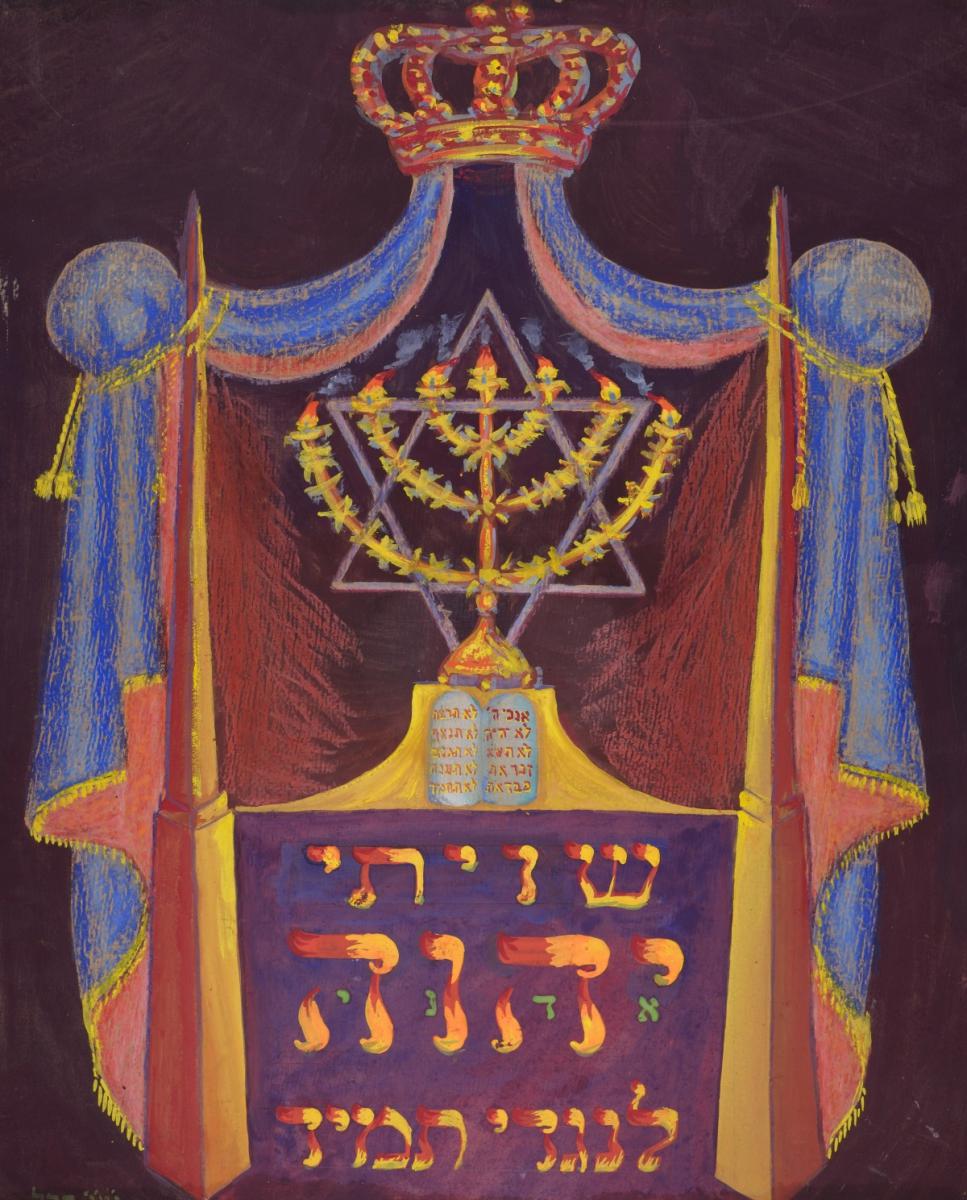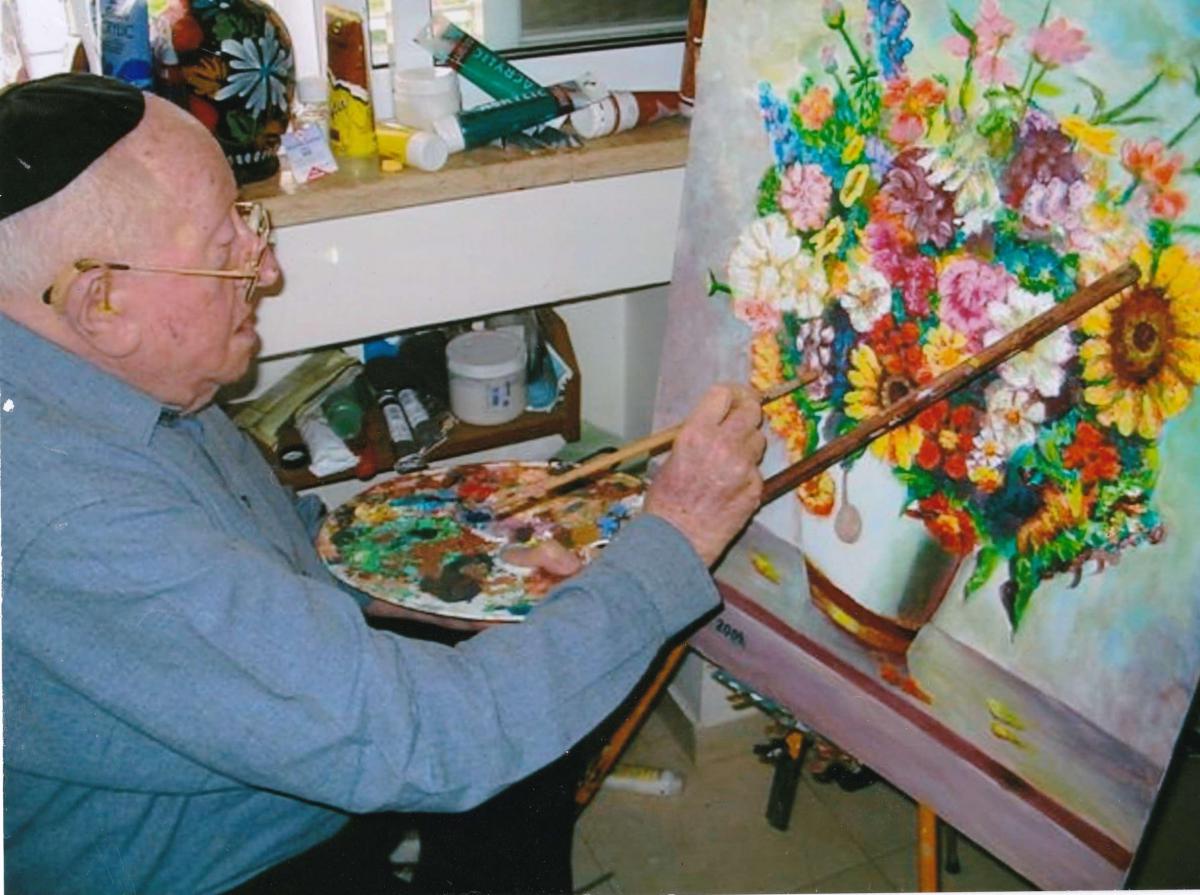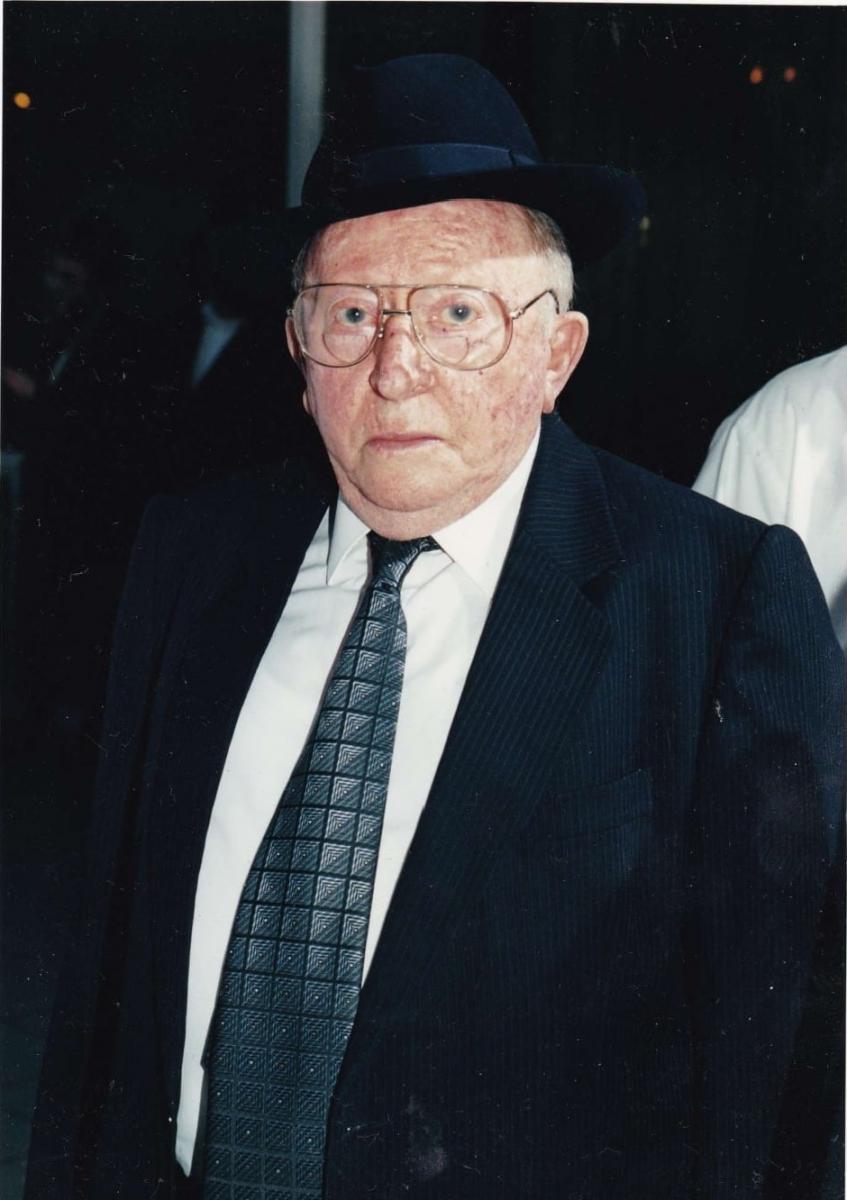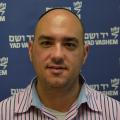
Yad Vashem


Yad Vashem


Yad Vashem

On the occasion of the visit of President Joe Biden, Yad Vashem Chairman Dani Dayan will present the President of the United States of America with a replica of one of Moshe Perl's first drawings from after the end of World War II. This "Shiviti" plaque was created by the Holocaust survivor a few days after his liberation at the Dachau concentration camp, in honor and anticipation of the first Jewish prayer service in the camp.
This colorful oil crayon, gouache painting on cardboard with the Biblical passage "I have set (Shiviti) the Lord always before me" [Psalms 16:8] in Hebrew featuring the seven-branched candelabra (menorah), are traditionally situated in a prominent place in synagogues, providing a focal point for worshipers during prayers.
In May 1945, US Army Chaplain Rabbi Leo Ginsburg came to Dachau with a Torah scroll, in order to organize a Shabbat prayer service in the camp for the first time after the war. The chaplain looked for an artist, and commissioned two paintings from Moshe Perl to adorn the space where the services would take place. Moshe created "The Ten Commandments" and "Shiviti" drawings. Due to the scarcity of materials, they were drawn in crayon on cardboard. With the completion of these works, a moving Shabbat prayer service took place in the liberated Dachau camp, with the participation of the few newly-released Jewish prisoners.
Moshe Perl was born in Radom, Poland in 1912 – a descendent of eminent rabbinic families in the Hasidic world. He had a traditional Hasidic education, in Cheder and Yeshiva and from a very young age showed a talent for drawing. He then went to art school in Warsaw, unusual for someone of his religious background. It was this artistic talent which later would save his life during the Holocaust and later form the basis of his livelihood. Learning Talmud and the writings of Hasidic masters was a great passion throughout his life. Though a workaholic, he remained a devoted Gur Hasid, always making time for learning Torah.
Moshe survived ghettos and concentration camps by means of his courage and resourcefulness. He was among the last Jews of Radom to be sent in 1943 to the Szkolna concentration camp . Later, he was transferred to the Tomaszów and Vaihingen concentration camps. While incarcerated in the camps, he used his talent for painting to help survive. He also helped save the lives of fellow Jews by insisting that he needed assistants for his artwork.
A determined and brave man who feared no one but God, Moshe recalled one Passover, when he persuaded the Nazis that he needed flour for his work. He secretly used the flour to bake matzah for a Seder meal, which he conducted with other inmates under the nose of their captors. After the war, he was reunited with his brother Meir, the only other survivor from their family.
After the war Moshe Perl married Perla, also a Holocaust survivor from Radom, who survived Auschwitz. In 1949, the couple immigrated to Israel, settling in Tel Aviv.
In Israel, Moshe continued to utilize his rare artistic talent, and built a business making shop signs by hand. He later progressed to neon signs, which were displayed on shops throughout the Tel Aviv metropolitan area.
While none of his prewar paintings survived, he later recorded some of his Holocaust experiences in drawings. The subjects of his early postwar paintings were largely Judaic and Israeli themes, landscapes and flowers, and copies of great masters. His final works, created after he retired, were mostly flowers, biblical and religious themes, and portraits. He always had a sketchbook and pencil at hand, and loved drawing faces.
Over the years, Moshe Perl worked tirelessly to help ensure that future generations would not forget the events of the past and the horrors of the Holocaust.
Moshe was a devoted father to his son and three daughters, 13 grandchildren and 8 great grandchildren.











